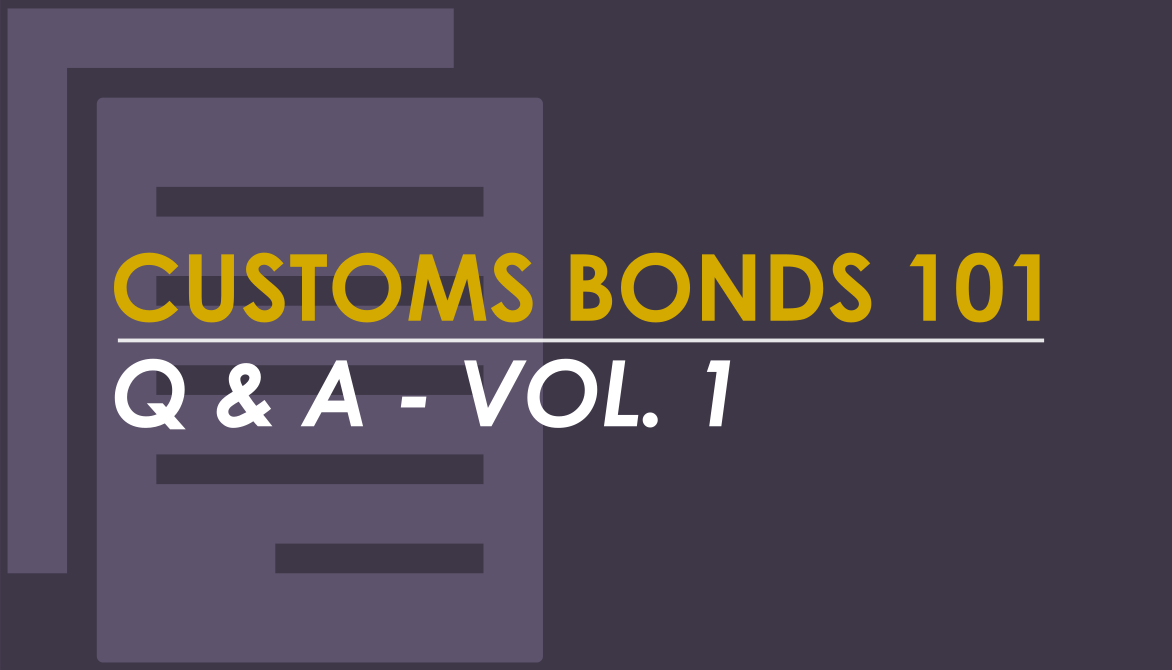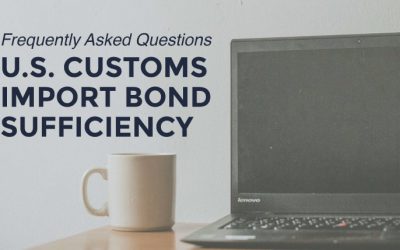We recently gave a presentation on the basics of U.S. Customs Bonds, called “Customs Bonds 101.” During the presentation, the attendees asked so many excellent questions, we felt like it would be a good idea to share some of them.
We hope that the answers to these questions will shine some light on the Customs bonds questions our readers that weren’t able to join us for the presentation might have.
“So the bond amount covers annual import duties? How is the amount determined?”
The Activity Code 1 – import bond is calculated at 10% of the estimated annual import duties and related taxes, and subject to a minimum bond of $50,000. The bond amount increases incrementally in $10,000 increments up to a $100,000 bond, then increases by $100,000 increments from that point on. For example, if your firm had estimated import duties and taxes at $425,000, you would need a $50,000 bond (10% X $425,000 = $42,500 total, and therefore subject to the $50,000 minimum bond).
For more information about calculating your Customs bond size, here is a short video on Trade Risk Guaranty’s YouTube channel that will help you determine the correct bond size you will need.
“What is a good rule of thumb on ‘How Often Should’ an importer review their Bond?”
My recommendation is to review your bond once a year, 90 days prior to its anniversary. This allows you to make changes that coincide with your anniversary date and avoid going into another bond period where duplicate premium charges come into play. This proactive process also keeps you ahead of any CBP increase letter that can get lost in the mail which could lead to shipments being delayed at the port because the bond was not increased timely. In another scenario, if your firm is expecting a very significant change to the volume of imports at any time during the year, this too would
be a time to reassess your bond amount.
“How difficult is it for a foreign importer of record to obtain a bond?”
The risk to a surety in writing bonds for foreign entities is due to the difference in international law and the surety’s ability to enforce the bond contract in a foreign court. If it is a foreign entity of a large multi-national parent, then you have a better chance in this situation due to this relationship. A general indemnity agreement to the surety linking these related companies together in regards to sharing the legal liability is a common remedy that may suffice. Another option many sureties will consider is a letter of credit from the applicant as collateral.
Hopefully, this has answered some of the questions about Customs bonds our TRG Peak readers have had. We’ll continue to add more from our presentation’s questions and answers section as time goes by, but if you have a question that isn’t mentioned here, feel free to ask it in the comment section below and we’ll do our best to give you an answer.





![[Webinar] How Could Changes to De Minimis Impact Your Company?](https://traderiskguaranty.com/trgpeak/wp-content/uploads/2025/05/trg-how-de-minimis-impacts-customs-bond-webinar-400x250.png)

![[Webinar] United States Reciprocal Tariffs – The What, Why, and How](https://traderiskguaranty.com/trgpeak/wp-content/uploads/2025/04/trg-webinar-reciprocal-tariffs-400x250.png)